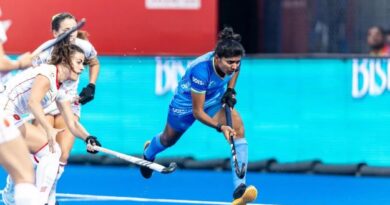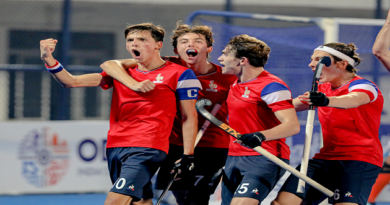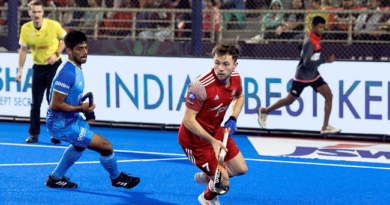How Goalkeepers Had to Adapt to Defending Penalty Shootouts Over Penalty Strokes Over Time
Hockey has evolved over the decades and the way game is played has undergone significant changes. Hockey goalkeepers also have to adapt to the changing demands of the sport. For over close to four decades, the penalty stroke rule was in place for matches that end in a tie (penalty stroke rule was first introduced at the 1972 Munich Olympics in the 11th-place classification match when Poland defeated France). The penalty stroke rule mandated players to take the stroke from 6.4 metres away from the centre of the goal. The general line of thought was that the old penalty stroke rule in deadlocked games had a higher luck quotient and involved less of skills of the striker and the goalkeeper.
Read When Wrong Knee Injury Treatment Brought Abrupt Halt to Charles Cornelius’ Promising Playing Career!
The penalty stroke rule was replaced by the penalty shootout rule in 2011 – the new penalty shootout rule was put to use for the first at the 2011 Women’s Hockey Champions Challenge II at Vienna – it was first implemented in the 3rd place match in which Belarus pipped Chile 3-1. The penalty shootout rule provides the striker and the goalkeeper with an opportunity to showcase their skills. A striker has to bring the ball in from outside the ‘D’ and has 8 seconds to score. The goalkeeper has to start from the goalline, when the umpire blows the whistle, comes of the line to cut the angle down and has to stop the striker from scoring.
Read Anecdotes Galore: Harcharan Singh Relives 1975 World Cup Glory
Former Indian Olympian goalkeeper Mark Patterson believes the onus is on goalkeeper to adapt to the changing demands of the sport. “Goalkeepers had to adapt to the way penalty corners were taken in the late eighties and used to lie down after taking a few steps from the goal, cutting down the angle and making it harder for the strikers to score. The rule was that strikers had to hit the back board from the initial direct hit and so goalkeepers used this rule to their advantage. The strikes in turn came up with the drag flick to counter this move by the goalkeepers. Instead of trying to hit the ball on the ground past the goalkeepers they used to disguise their hits and drag flick the ball into the net.”
Read Coach Rajinder Singh Recalls India’s 2001 Junior World Cup Glory
Patterson, who migrated to Australia in the early nineties after being cold-shouldered for the 1992 Barcelona Olympics, pointed out how goalkeepers needed to have skills to deny a goal in the old penalty stroke exercise. “Penalty strokes were considered as a sure goal but goalkeepers needed their own level of preparation. Goalkeepers must have quick reflexes, an ability to read the angle of the stick and the body of the striker, and to anticipate in a split second where the ball was being pushed to.”
Read When India Beat Japan 5-0 Without Actually Scoring a Goal!
He shares his perspective on how defending ways of goalkeepers have changed in the penalty shootout rule. “In the old penalty stroke rule, instinct, reflexes and anticipation were the key skills required by goalkeepers to succeed. In the penalty shootout exercise, patience is the most important things and then you got to have the ability to stay on your feet and in front of the striker. Goalkeepers have to be more agile, must be able to move forward and laterally with speed while at the same time being balanced, and get the timing of the movements spot on.”
Goalkeepers also can make things tough for strikers by resorting to mindgames, insists Patterson. “Goalkeepers does not have to stop the ball at all and only have to ensure the striker does not score in 8 seconds. So creating doubt, disrupting their thinking and delaying their plans, while showing that you are in control will make them panic, then being patient, balanced and on your feet as long as possible will increase the goalies chance of success. But the strikers will have their own plans for sure and that’s the beauty of competition,” he says.
Two-time World Cup medallist goalkeeper Charles Cornelius voiced his dissatisfaction at the new penalty shootout rule. “I think this shootout rule is not fair on goalkeepers. On so many occasions we see player rush near the goalkeeper show their back and does not allow goalkeeper to see where the ball is.”
The penalty shootout rule also means goalkeepers have to enhance their tackling skills. “The shootout rule requires goalkeepers to indulge in tackling as well and now you are expecting goalkeepers to be your fullback in shootouts. Don’t forget, goalkeepers armed with those big gloves and it is never easy to tackle with the stick with those gloves,” quips the former legendary goalkeeper whose international career was cut short by a wrong knee injury treatment just before the 1974 Tehran Asian Games.




